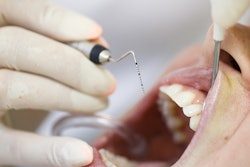
Exposure to the environmental pollutants volatile organic compounds (VOCs) may be positively linked to periodontitis, highlighting the need for policies to address their impact, according to a study published in BMC Oral Health.
Furthermore, systemic inflammation may facilitate this link, the authors wrote.
"This study demonstrated a positive association between VOCs exposure and periodontitis, which was potentially mediated by systemic inflammation factors," wrote the authors, led by Zhida Dai of Jinan University in China (BMC Oral Health, October 30, 2024).
VOCs are common pollutants primarily from fuel combustion, industrial emissions, building materials, scented consumer products, and tobacco smoke. While previous studies have linked VOC exposure to chronic diseases like diabetes, kidney dysfunction, and cardiovascular disorders, evidence of its potential effects on oral health remains limited, they wrote.
This study analyzed data from the U.S. National Health and Nutrition Examination Survey 2011-2014 to examine the effects of VOC exposure on periodontitis. Urinary metabolites of VOCs (mVOCs) were measured using electrospray tandem mass spectrometry to assess internal VOC exposure.
Several models, including multivariable logistic regression, restricted cubic spline regression, Bayesian kernel machine regression (BKMR), and quantile g-computation (QGC), were applied to evaluate VOC effects on periodontitis. Mediation models also assessed the role of systemic inflammation in this relationship, they wrote.
The study included 1,551 participants with an average age of approximately 53, with 45.2% having periodontitis. Positive associations were found between individual mVOCs and periodontitis, and BKMR and QGC models highlighted significant associations between mixed VOC exposure and periodontitis, with 2-aminothiazoline-4-carboxylic acid as a major contributor.
Systemic inflammation markers partly mediated this association. Leukocyte and lymphocyte counts mediated the association between mixed VOC exposure and periodontitis, with mediation proportions of 5.4% and 3.6%, respectively (p < 0.05), while neutrophil and monocyte counts showed no significant mediation effect (p > 0.05), according to the results.
However, the study had limitations, as its cross-sectional design could not establish causal relationships, the authors added.
"This study provided an insight into surveillance and public health for periodontal diseases from an environmental health perspective, aiming to raise public awareness of impacts of VOCs exposure on periodontal health and help develop health programs and policy to relieve global health burden in the future," Dai and co-authors concluded.




















